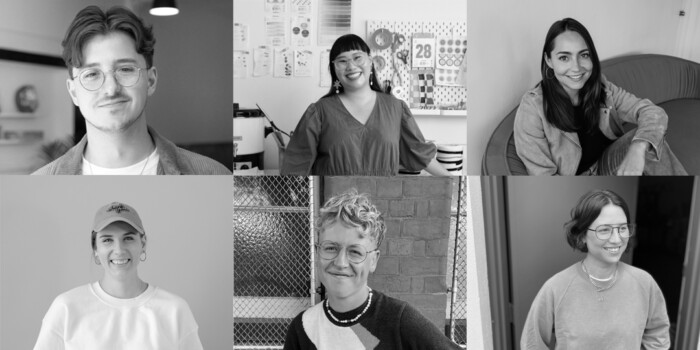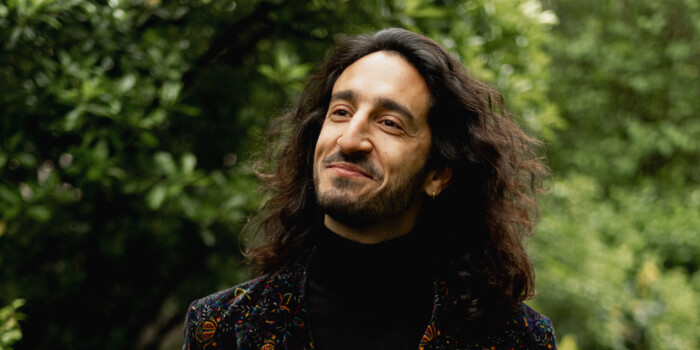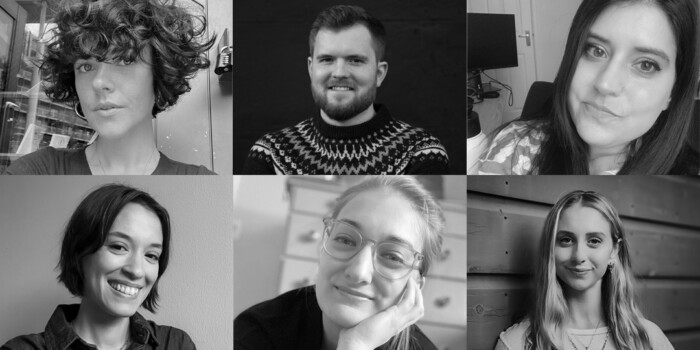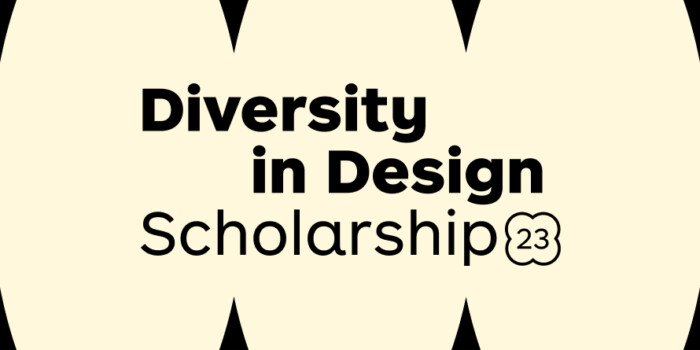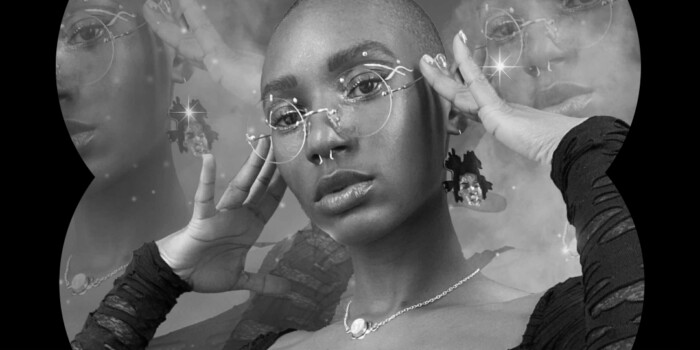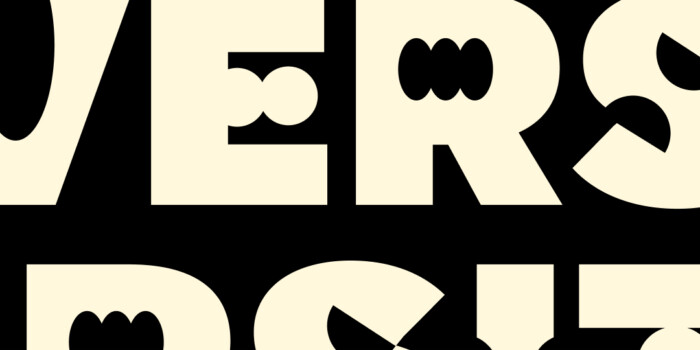Interview with Maude Paquette-Boulva, Graphic Designer at 214
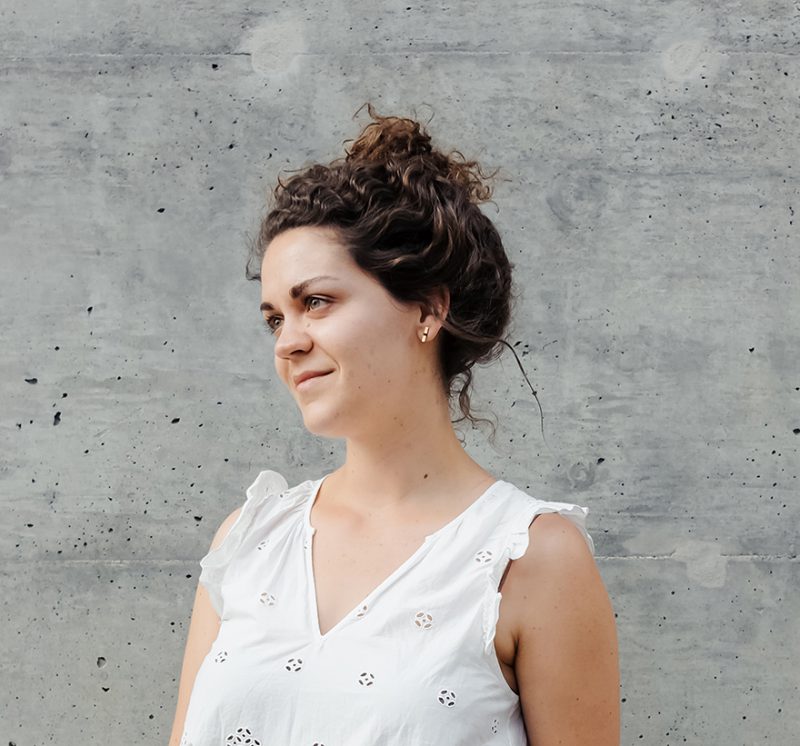
Maude Paquette-Boulva is a Brooklyn-based French Canadian designer from Montréal currently working at the brand strategy and creative studio, 214. Her work has a minimalist aesthetic using natural colour palettes and beautiful photography which she shares with us in this interview. She is passionate about book design, typography, and her newfound hobby making pottery.
Read on for Maude’s advice to creatives interested in working at an agency, the process behind her design work, and some of her favourite places in and around New York.
You studied design at Collège Ahuntsic as well as Université du Québec in Montréal. At what moment did you realize being a designer was the career path for you?
I never had an aha-moment in which I realized with certainty I wanted to be a designer. It was a realization that grew over time, as I learned more about the profession. I enrolled in design school because I fell in love with the visual aspect of it before anything else.
Moving to Montréal had a great impact because that’s when I started seeing more design on a daily basis. I come from a quaint little country town that isn’t at all design-oriented, so moving to the city just made everything more tangible. I still remember collecting each printed sample of interesting design I could find! I kept my collection for years but gave it away when I moved to New York.
My first 3 years in design school at Collège Ahuntsic were primarily focused on the technical aspect of the job, so I got really good with all the tools but was still very much focused on aesthetics. University is where I grew to understand the functional side, which is when everything came full circle. It made the work feel more purposeful and added the main layer I had been looking for.
Design encompasses so many elements that you can keep learning throughout your entire life. I want to keep deepening my understanding and help companies communicate their message to create a positive impact.
Were there any challenges that you experienced just starting out?
My first job was a bit challenging because I started as the sole in-house designer for a startup when I had no prior work experience. I had previous experience with small freelance design gigs and learned a lot from teachers while in school, but being thrown in a situation where I had to make the calls without a senior advisor was a bit scary at first.
The good part about this is you end up learning really fast, often from your own mistakes. “Failing forward” is something I enjoy because it’s more experiential than slowly climbing a safer ladder, but now that I’m at an agency, there are definitely aspects of learning with a safety net that I find enjoyable too.
Do you think having a mentor is important?
I think it can be, but I don’t see mentorship as I did when I was in school. I used to think of a mentor as someone who would show me everything they knew about design, and I was very focused on the professional side of it.
I’ve found that I appreciate mentors as people whose life and choices I generally admire.
It has less to do with specifics, and more with learning different ways to navigate challenges and plan for the future. That being said, I do think having a boss or teacher who can answer design questions is extremely useful, especially when you are starting out. Different people need different things, so the key takeaway is to ask for help when you need it.
You’ve been working as a designer for the creative agency 214 the past 3 years. What’s a typical day like working there?
Our agency has an amazing culture, so every day is filled with work and a lot of fun. We share two floors of a SoHo building with our parent and sisters companies, so even though our team is reasonably small, we have the office vibe of a much bigger agency.
A typical work day is from 9:30am to 6:30pm with a flexible lunch break, and tasks vary a lot based on where we are in a project. There’s a lot of individual “heads-down” work mixed with internal or client meetings. People sometimes work remotely, so we have online communication tools that allow us to stay in touch while optimizing our time.
When it comes to project structure, each new client is assigned a team based on employee availability. There’s a kickoff meeting for each project phase where everyone reviews timeline and deliverables together, after which we go our own way and collaborate where needed. Designers work with interns and manage their own projects, with occasional internal meetings with account managers and our chief creative officer. We also review each presentation deck before client meetings to add the final design touches. We have a pretty great process that allows for both support and autonomy.
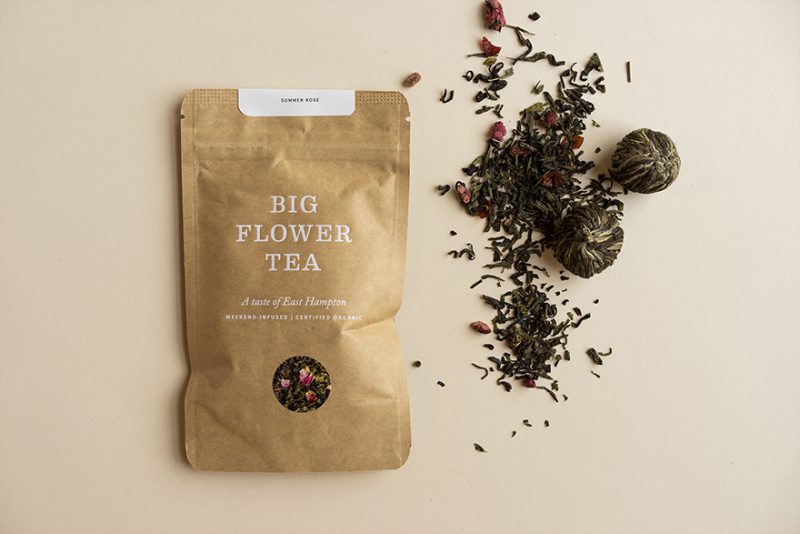
What advice can you offer to a designer who wants to get a job at a creative agency?
Have a portfolio that showcases most of your skillset. As designers, we often have a preference for the type of work we like to do, be it print, web or illustration. That’s great when you are a freelancer and are trying to attract specific clients, where advertising what you are looking for makes the most sense.
Since agencies can only hire so many designers, they often look for someone with a broader spectrum of capabilities to make sure they can work on any type of project.
They don’t want to feel like they have to sacrifice good typography in order to get a great web designer, so make sure the main boxes are checked, even if it means mocking up an extra graphic that wasn’t in the original project.
It’s also great to have specific project descriptions where you explain what role and tasks you accomplished so there’s no ambiguity, as well as a little information on your thought process. These are all questions that can be answered during an interview, but having them readily available might be what gets you through the next round.
Talk to us about some of the branding and web design work you’ve done. And how do you approach a new project?
I like to do a lot of research. Because each new client comes with an entirely new realm of visual cues related to their category, I feel the need to create a tapestry of competitors in my head to really understand the market. Our agency focuses a lot on strategy, so the initial phase of each project is done in tandem with strategists where we create a strong foundation for the direction we’ll be taking. It’s also a good time to make sure we are aligned with the client’s needs so there are no surprises later on.
Our branding process is pretty standard. We tend to present an average of three options for each phase and offer three rounds of edits per phase. Like any design project, it works like a funnel where we’re constantly narrowing down the options to end up with a single solution. We build some brand guidelines as part of our scope of work, so by the time we have to create collateral pieces, the system pretty much defines itself.
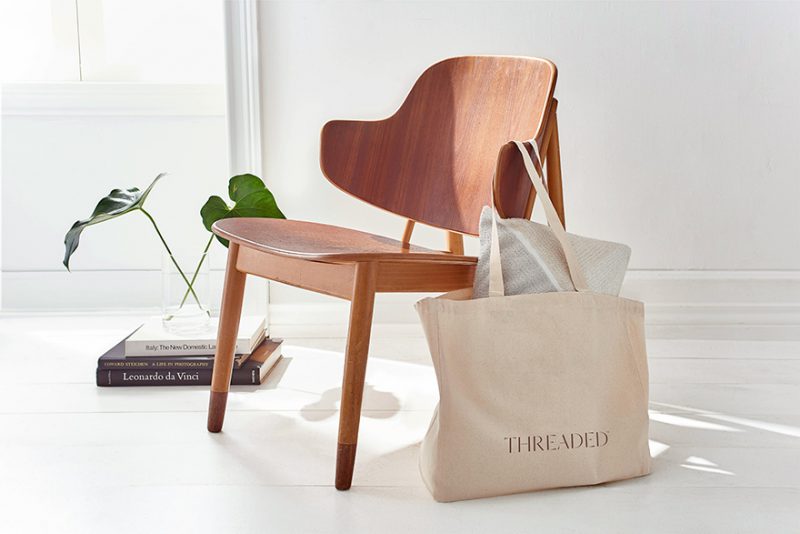

One of my most recent projects was for a bedding brand called Threaded. After creating their new branding, the biggest component of the project was a fully custom e-commerce website. We started by discussing at length which functionalities our clients wanted and making sure everything was doable with our developer. Once everything was approved, we followed up with initial wireframes, which slowly evolved into designs. Because we were also creating all of the content, at times it was somewhat a cat and mouse game between design and copy, so both teams consulted each other often to make sure everyone’s needs were met.
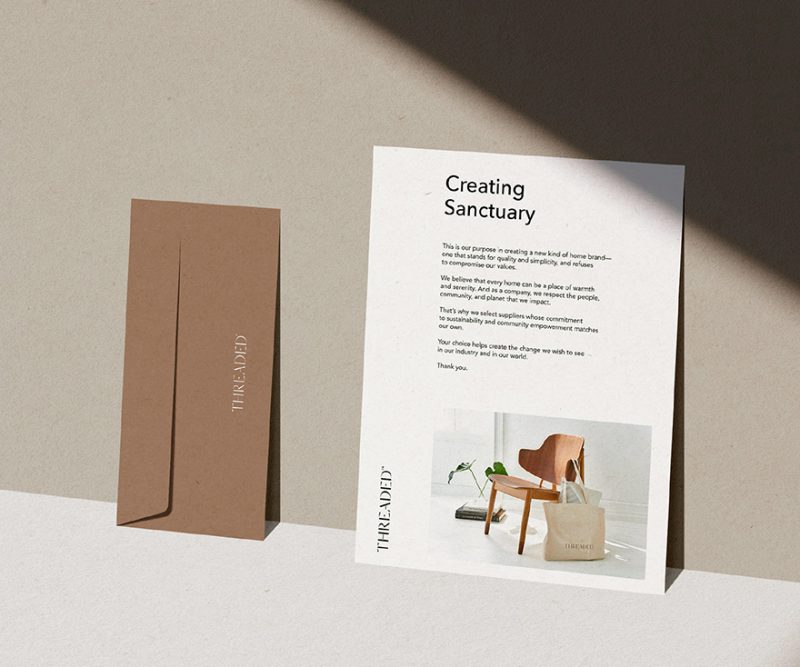

When all designs had been approved by our clients, the files were sent to development for about a month. We had a content matrix to keep building the copy during that time, which everyone ultimately tag-teamed to input into the CMS (content management system) once we had access. Last but not least, we did about 2 weeks worth of QA (quality assurance) to fix all the bugs before launch.
Each project is different so there’s always a need to adapt, but it’s good to have a basic process to start from.
How do you juggle your freelance work with your day job?
I’m a bit of a workaholic! The beauty of juggling full-time and freelance is that the freelance comes as extra. It’s something I don’t have to do, but choose to, so these are often passion projects.
I try to keep my day job within normal working hours so my nights and weekends are free to do other things (which just happens to be more design work).
I work really hard because I love it, and I know I’m at a point where I still have a lot of energy to do that.
Are there any dream projects you would love to work on in the next few years?
I would really love to get back into book design. I haven’t worked on anything editorial this year and I miss it a lot. My dream would be to work for an art gallery or museum that also publishes books, like Dia or The Met. I’d like to get the opportunity to work on something high end, so having artists or art-enthusiasts as clients would be incredible.


How did you first get into book design and what inspires you most about it?
I got into food photography pretty soon after high school and followed many food bloggers as they published and shared their first book. I didn’t even cook, but I would order cookbooks and look at the page layouts and the photography. I was really into What Katie Ate, Kinfolk, Sunday Suppers, and many others. My all-time favourite book was Polpo, with its beautiful stitched binding. All of these books made me appreciate paper, printing, and all the physical aspects of publication design. That’s why I reached out to Trois fois par jour, the food blog that became my first job, cookbook and magazine.

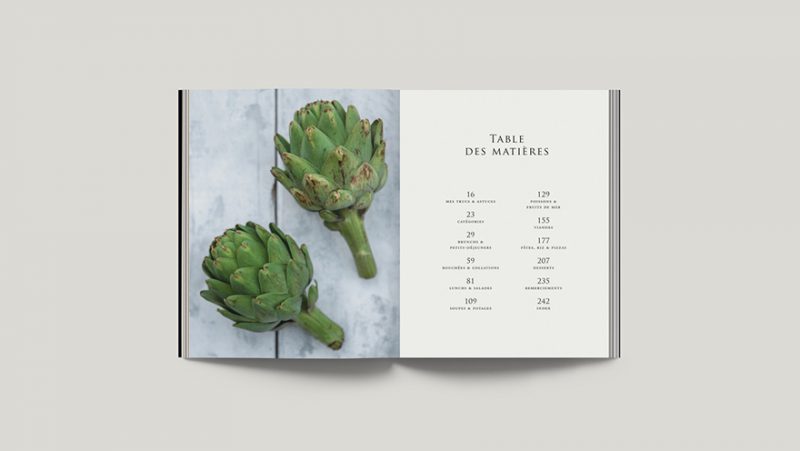
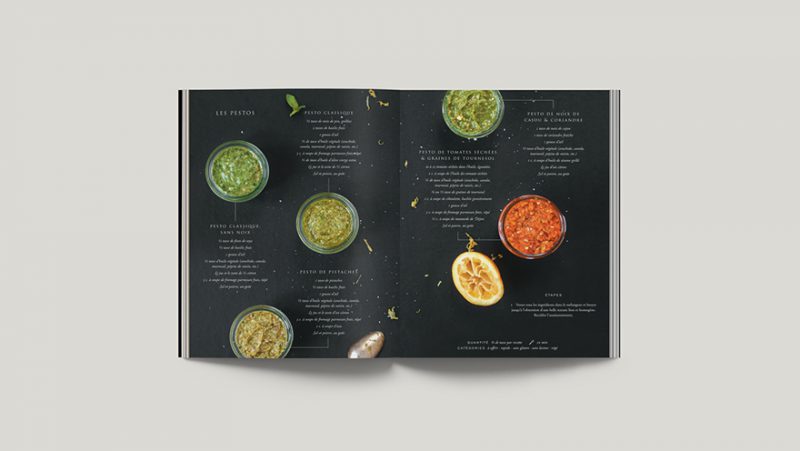
There’s something very relaxing about organizing information. It’s such a puzzle and the problem changes every time as the content varies.
Some books are hard to lay out because there are so many short pieces of different information.
Others are hard to make interesting because they only have a single never-ending story. I like the challenge of creating a balance between form and function, where words need to look aesthetically pleasing and interesting at a quick glance, but also be displayed in a way that flows easily for long reading periods. I also love searching for the perfect typeface to match the subject and express the emotion it needs to convey. I’m very particular about typography, especially with punctuation rules and tiny spacing details! It brings me peace of mind when things are done correctly.


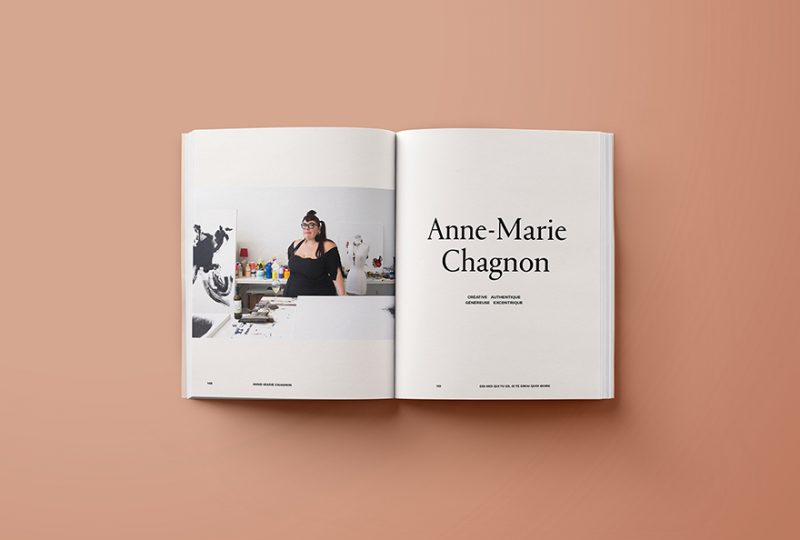
What are your top creative magazines and websites for design?
I pull inspiration from various places, rather inconsistently! For all type and branding matters, I’m a sucker for Pinterest and Instagram. I have well-trained algorithms and I use these platforms as work tools rather than to follow friends. (I keep up with my loved ones in other ways!) I also like Behance because I follow a lot of agencies I love and get to view their work in one location instead of visiting each individual website. For web inspiration, I like Muzli or SiteInspire. I’m not the best with keeping up with podcasts and blogs, but we do have an office Slack channel for design inspiration that I really enjoy. It allows us to share our findings and discuss them with our creative team.
What are your favourite things about living in New York as a designer compared to Montréal?
The styles of the cities are very different. Montréal has a somewhat defined aesthetic and everything feels very curated and consistent. New York City is extremely vibrant and a beautiful mess. Being here is incredible because you get to see campaigns on the street instead of trying to keep up with pictures online.
Everyone is so creative and anything goes.
Nothing can shock New Yorkers, so there’s a stronger will to be eccentric just to make people notice anything. It makes for stronger messaging because the competition is everywhere, so creatives hustle and are constantly pushing themselves.
Tell us about your top places to visit in New York.
New York City has such amazing architecture. I’m a big fan of walking, so I like to go on touristy day trips in random neighborhoods. My best route is taking the ferry from Greenpoint down to Dumbo, climb up the hill to the Brooklyn Heights Promenade to look at the beautiful houses, and then head to Cobble Hill and Caroll Gardens for a nice walk.
I also like to go read at the Greenwood cemetery or around Prospect Park. In Manhattan, the East and West Village are my favourite neighborhoods to trek through during my morning walk from the L train to work. If I’m going to a museum, The Met is a safe choice. I recently visited The Met Cloisters at Fort Tryon and absolutely loved it! Lastly, my favourite Greenpoint work spot is A/D/O, which has the best space and food. Close to my apartment, I love Bakeri, Ovenly, Maman, Early, 21 Greenpoint and Paulie Gees. There are honestly so many amazing spots that the list could go on.
What keeps you busy outside of your day job?
I started making pottery last year and really enjoyed it. I had to stop because it was getting hard with my work schedule, but I plan to start again very soon. I also like to leave the city on the weekend whenever possible, even for a day trip Upstate. I highly recommend the Dia: Beacon Museum. I’ve gone back to Montréal a few times over the summer, and also have friends from Canada who come to visit, so I enjoy being a tour guide and showing my guests the lesser-known spots. Otherwise, I enjoy a quick drink or bite with friends after work. I like to keep my schedule clear to encourage unpredictability. Something always pops up!
Based on your experience working as a creative, give us your top tips for a designer just starting out.
Stand for something. Make a positive impact when you can.
- Try many things. Give yourself a chance to appreciate them, and move on if you don’t.
- Ask for what you want. Don’t be greedy, but know your worth.
- Work hard. Focus on your goals and do what it takes to reach them.
- Don’t put too much pressure on yourself. You have time to do great things.
Huge thanks to Maude for sharing her story and insights! Be sure to check out her website and follow her on Instagram.
Do you love book design and editorial design? Check out 18 Inspiring Book Covers Created by Shillington Students. If you’d love to create work like that, discover more about studying graphic design 3 months full-time or 9 months part-time at Shillington in New York, London, Manchester, Sydney, Melbourne or Brisbane –>shillingtoneducation.com
Want to win some amazing prizes and stay in the loop with all things Shillington? Sign up to our newsletter to automatically go in the draw.

